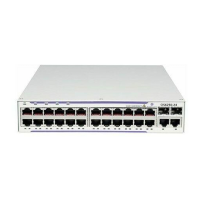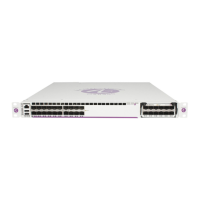QoS Policies
7210 SAS D, E, K OS Quality of Service Guide Page 79
CPU Queues
CPU Queues on 7210 SAS-D, SAS-E
The packets that are destined to the CPU are prioritized based on the application. Some of the
applications that are prioritized are Layer 2 data packets (a copy of which is sent to CPU for MAC
learning), EFM, CFM, STP, LACP, ICMP, etc. The CPU provides eight queues from BE (0) to NC
(7). The packets destined to the CPU are classified internally and are put into the correct queue.
These packets are rate-limited to prevent DoS attacks. The software programs the classification
entries to identify these packets and assigns appropriate bandwidth and priority to them. It is not
configurable by the user.
CPU Queues on SAS-K
The packets that are destined to the CPU are prioritized based on the application. Some of the
applications that are prioritized are Layer 2 data packets (a copy of which is sent to CPU for MAC
learning), EFM, CFM, STP, LACP, ICMP, etc. The packets destined to the CPU are classified
internally and are put into the correct CPU queue. These packets are rate-limited to prevent DoS
attacks. The software programs the classification entries to identify these packets and assigns
appropriate bandwidth and priority to them. It is not configurable by the user.
Egress Port Rate Limiting
This features allows the user to limit the bandwidth available on the egress of the port to a value
less than the maximum possible link bandwidth. On some platforms, it also allows the user to
control the amount of burst sent out.
Forwarding Classes
7210 SAS devices support multiple forwarding classes and class-based queuing, so the concept of
forwarding classes is common to all of the QoS policies. Each forwarding class (also called Class
of Service (CoS)) is important only in relation to the other forwarding classes. A forwarding class
provides network elements a method to weigh the relative importance of one packet over another
in a different forwarding class.
Queues are created for a specific forwarding class to determine the manner in which the queue
output is scheduled. The forwarding class of the packet, along with the in-profile or out-of-profile
state, determines how the packet is queued and handled (the per hop behavior (PHB)) at each hop

